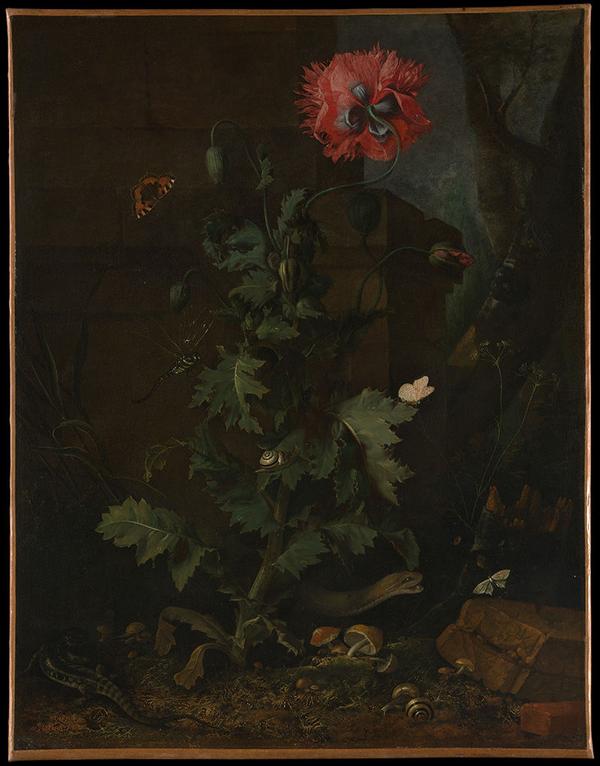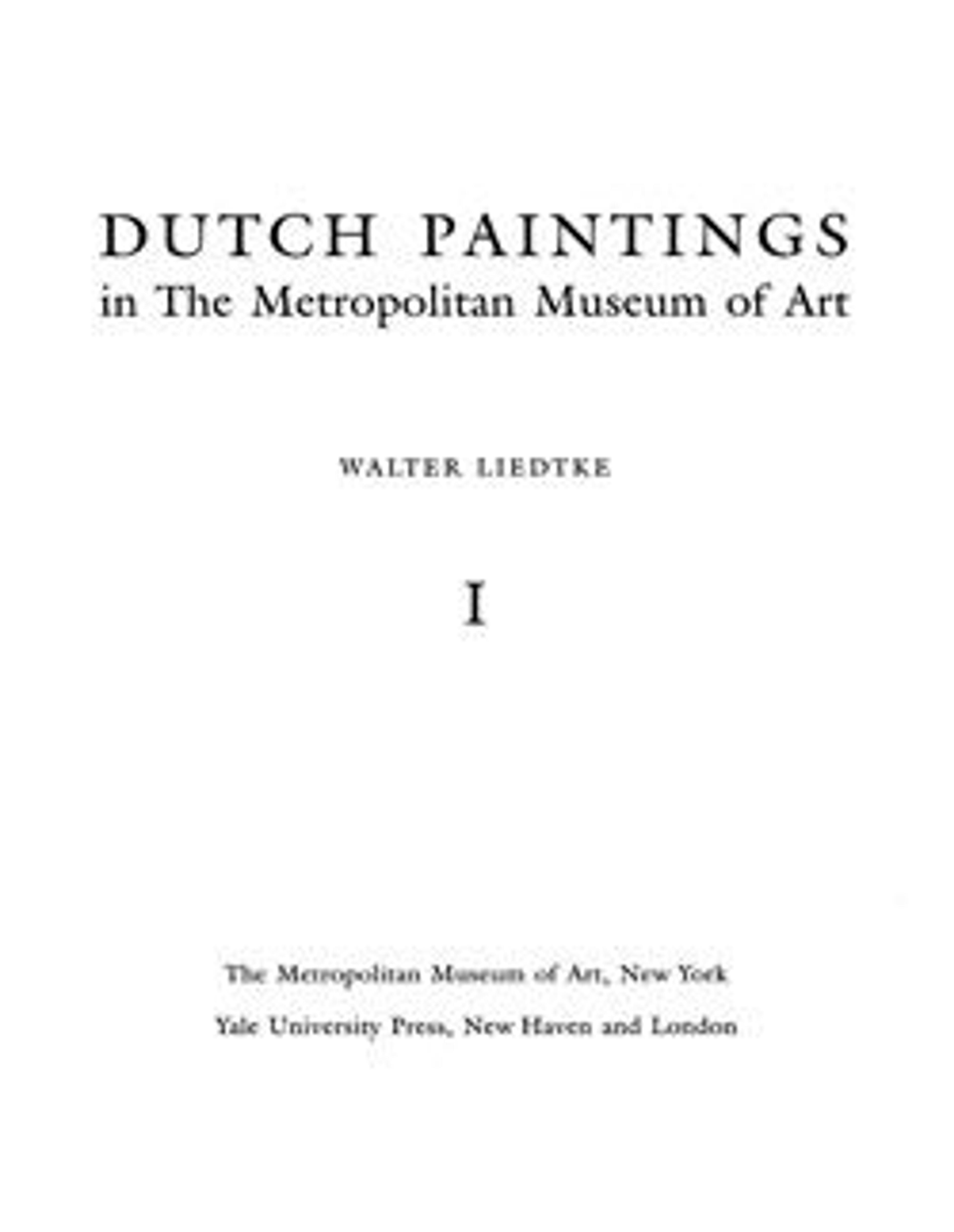Still Life with Poppy, Insects, and Reptiles
Known to contemporaries as "The Snuffler" due to his apparent penchant for rooting around in the undergrowth, Marseus van Schrieck had close ties with the seventeenth-century culture of scientific investigation. This picture of the forest floor bristles with interactions between a lizard, snake, snails, and butterflies, all in the shadow of a poppy. Rather than painting flowers elegantly arranged in a vase, Marseus locates his blooms in a natural setting touched with an element of menace.
Artwork Details
- Title:Still Life with Poppy, Insects, and Reptiles
- Artist:Otto Marseus van Schrieck (Dutch, Nijmegen 1619/20–1678 Amsterdam)
- Date:ca. 1670
- Medium:Oil on canvas
- Dimensions:26 7/8 x 20 3/4 in. (68.3 x 52.7 cm)
- Classification:Paintings
- Credit Line:Rogers Fund, 1953
- Object Number:53.155
- Curatorial Department: European Paintings
Audio

5256. Otto Marseus van Schrieck, Still Life with Poppy, Insects, and Reptiles
NARRATOR: A single, humble poppy plant is the elegant star of this still life.
REMCO VAN VLIET: It’s growing up out of the ruins. It has all these shady characters on the bottom. The mushrooms, the snake, the lizard. And the snake is only interested in grabbing that little moth. Even the dragonfly—it's also hovering around.
NARRATOR: This artist, Otto Marseus van Schrieck, earned the nickname the “Snuffelaer,” or ferreter, for his forest floor pictures set amid the undergrowth of moss-covered ground.
REMCO VAN VLIET: You see even with this poppy, it bends its neck, and it’s almost a sign that maybe you didn’t have enough water, so it was drooping, and then it rained again, so it came up again. It’s also a tubular flower, doesn’t have a very strong stem. It’s very weak.
NARRATOR: As the floral designer at The Met, Remco van Vliet has strict rules for his towering arrangements in the Great Hall.
REMCO VAN VLIET: Poppies, for instance, that's one of the few flowers I don’t mix with anything else. I just like them by themselves. Once you start adding poppies to a flower arrangement they usually dominate.
NARRATOR: Van Vliet grew up in the flower-obsessed Dutch culture, and came to New York at age eighteen. He identifies with the notoriously finicky poppy.
REMCO VAN VLIET: To me it symbolizes really that even though you have all these hardships around you and you’re coming from a difficult location in life, and a big struggle to even grow, eventually, if you fight hard enough, you grow up and reach the sunlight.
NARRATOR: Van Vliet finds it curious that the artist turns the front of the poppy away from us.
REMCO VAN VLIET: Why do we see the back of the poppy? When you look at other still lifes, you always see the front of the flowers, because it was more showing off. If a curator could turn it around, the painting, so you could see the face of the poppy; it would probably be smiling.
More Artwork
Research Resources
The Met provides unparalleled resources for research and welcomes an international community of students and scholars. The Met's Open Access API is where creators and researchers can connect to the The Met collection. Open Access data and public domain images are available for unrestricted commercial and noncommercial use without permission or fee.
To request images under copyright and other restrictions, please use this Image Request form.
Feedback
We continue to research and examine historical and cultural context for objects in The Met collection. If you have comments or questions about this object record, please contact us using the form below. The Museum looks forward to receiving your comments.
